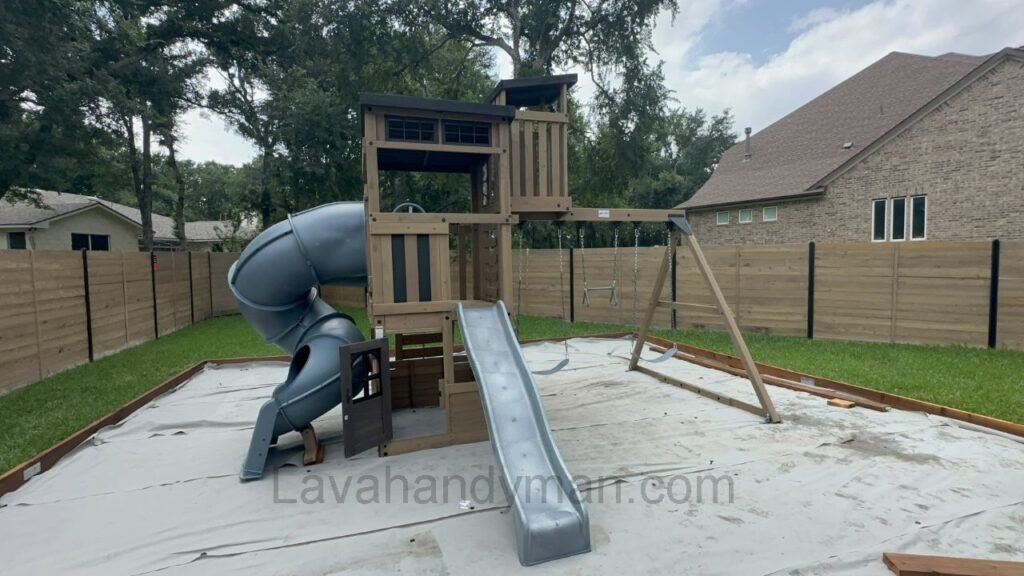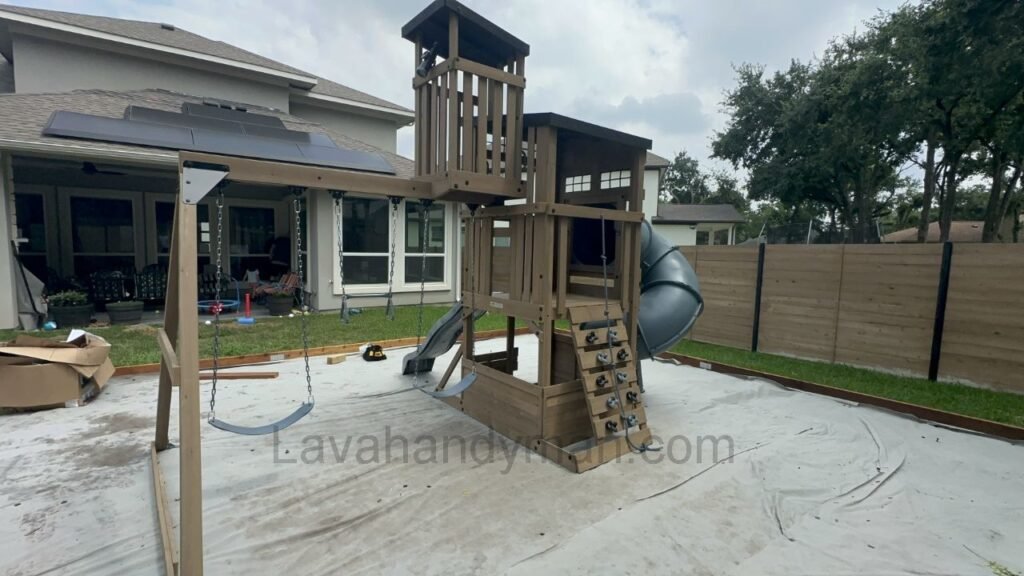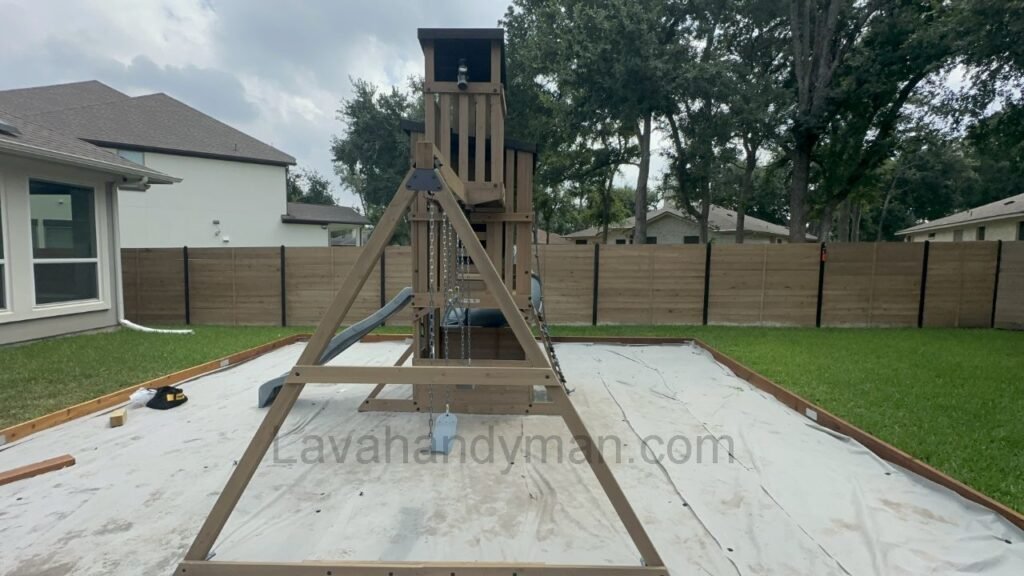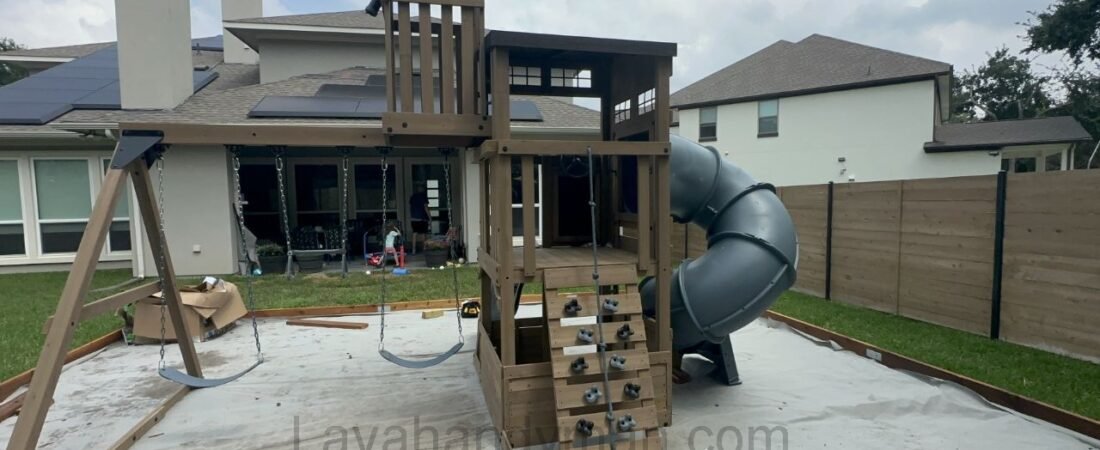Children’s Play Equipment: A Comprehensive Study on Role, Types, Design, and Future
Introduction
Play is a fundamental need in childhood, and playgrounds with diverse equipment offer a structured environment for fulfilling this need. Play equipment is not just for entertainment—it plays a critical role in children’s physical, cognitive, emotional, and social development. This article provides an in-depth overview of the history, types, benefits, safety standards, design principles, and future directions of children’s play equipment.
1. History of Play Equipment
The first structured playgrounds originated in 19th-century Germany with “sand gardens” designed to encourage social and motor development. In the 1880s, the U.S. established its first formal playgrounds in Chicago. By the 1940s, Denmark introduced “adventure playgrounds,” where children used real tools to build and shape their own play environments. This concept soon spread to the U.K. and beyond.

Children’s Play Equipment: A Comprehensive Study on Role, Types, Design, and Future
2. Categories of Play Equipment
2.1 Swings
Swings promote core strength, balance, and coordination while giving children a thrilling sensation of flying. There are many types, such as belt swings for toddlers, wheelchair-accessible swings, and rope swings.
2.2 Slides
Slides introduce children to gravity, risk management, and motion. While they foster motor confidence, poor design (e.g., overly steep slopes or hot surfaces) can pose safety concerns.
2.3 Climbing Structures
Including climbing walls, ladders, and rope structures, these help children build upper-body strength, improve problem-solving skills, and develop spatial awareness.
2.4 Balance Equipment
This includes balancing beams, wobble bridges, and log paths, which enhance stability, concentration, and confidence.
2.5 Spinners
Spinning equipment helps stimulate the vestibular system and develop a child’s spatial orientation and body awareness.
2.6 Nature Playgrounds
These are designed using natural elements like wood, stones, water, and sand, encouraging creativity, exploration, and environmental connection.
Children’s Play Equipment: A Comprehensive Study on Role, Types, Design, and Future
3. Benefits of Play Equipment
3.1 Physical Development
Play builds muscle strength, improves flexibility, supports cardiovascular health, and promotes gross and fine motor coordination.
3.2 Cognitive Development
Problem-solving, critical thinking, and decision-making are enhanced as children engage in unstructured and goal-oriented play.
3.3 Social Development
Group play fosters turn-taking, cooperation, empathy, conflict resolution, and leadership skills.
3.4 Emotional Development
Play enables children to process fears, express emotions, and build self-esteem and resilience.
Children’s Play Equipment: A Comprehensive Study on Role, Types, Design, and Future
4. Safety and Standards
Safety is a fundamental aspect of play equipment design. International bodies such as ASTM (U.S.), EN1176 (Europe), and ISO provide guidelines for materials, height limits, surface coverings, spacing, and maintenance. Features like rounded edges, shock-absorbing surfaces, and regular inspections are crucial for injury prevention.
5. Age-Appropriate Design
Play equipment should match the physical and psychological capabilities of specific age groups. For instance, children aged 2–5 require lower, simpler structures, whereas ages 5–12 can handle more challenging and taller structures with complex features.
6. Inclusive and Accessible Design
Inclusive playgrounds are designed to be accessible to children of all abilities. Wheelchair-friendly ramps, sensory panels, high-back swings, and tactile paths help ensure no child is left out. These spaces promote equality, community, and diversity in recreational settings.
7. Challenges and Limitations
Key challenges include high costs of inclusive and safe equipment, limited urban space, harsh weather conditions, vandalism, and a lack of safety education for parents and caregivers. Budget constraints can also hinder regular maintenance and updates.
8. Innovation and the Future of Playgrounds
Modern playgrounds are embracing smart features, renewable energy generation (e.g., swings that produce electricity), and augmented reality to blend physical play with digital learning. Future designs aim to be multisensory, modular, interactive, and aligned with environmental sustainability.

🛠 Complete & Optimized Guide for Installing Children’s Playground Equipment:
Introduction
Proper installation of playground equipment directly impacts safety, durability, and the quality of play. Following technical principles, safety standards, and age-appropriate design are essential for a professional installation. This step-by-step guide outlines the entire process in a clear and practical manner.
1. Site Assessment & Planning
1.1 Site Evaluation
- Analyze soil type (for appropriate foundations)
- Assess slope and leveling needs
- Ensure access to sunlight, shade, safety, and distance from roads or hazards
1.2 Layout Design
- Identify target age group (2–5 years, 5–12 years, or mixed)
- Maintain safety distances between equipment (per EN 1176 standard)
- Design movement paths, rest zones, and emergency access points
2. Ground Preparation
2.1 Leveling and Drainage
- Level the terrain to eliminate bumps and depressions
- Install drainage systems to prevent water accumulation under equipment
2.2 Foundation Work
- Dig footing holes (30–80 cm deep depending on equipment size)
- Pour reinforced concrete (recommended: C25 or higher)
- Install steel anchor plates or sleeves for mounting support posts
3. Equipment Installation
3.1 Main Structure Assembly
- Place posts into foundation holes and level with a laser tool
- Secure parts using anti-rust bolts or welding based on technical drawings
- Use a torque wrench to tighten all bolts to manufacturer specifications
3.2 Installing Moving Components
- Attach slides, swings, bridges, or rotating elements using certified fasteners
- Test each movable part for smooth, noise-free operation
Children’s Play Equipment: A Comprehensive Study on Role, Types, Design, and Future
4. Safety Surfacing
Common Options:
- Rubber flooring (tiles or rolls): 25–50 mm thick depending on fall height
- Washed sand or play-grade gravel: 30–50 cm deep
Key Considerations:
- Surfacing must cover the entire fall zone around each piece of equipment
- Base layers should allow for proper drainage
- Border edging is necessary to contain loose-fill materials
5. Final Safety Check
5.1 Technical Inspection
- Verify all structures are stable 24 hours after concrete curing
- Check for sharp edges, exposed hardware, and structural alignment
- Conduct load testing (with adult weight) to confirm strength
5.2 Install Signage
- Display age-appropriate usage guidelines, safety warnings, and support contact information
6. Maintenance & Routine Inspection
- Monthly or seasonal visual inspections
- Replace worn or damaged parts promptly
- Lubricate bearings, joints, and moving parts regularly
- Perform annual cleaning and repainting if needed
7. Required Tools & Equipment
| Tool | Purpose |
|---|---|
| Laser Level | Ensuring accurate vertical and horizontal alignment |
| Drill & Allen Wrenches | Fastening bolts and modular parts |
| Shovel & Concrete Mixer | Foundation digging and mixing |
| Safety Gear (helmet, gloves) | Worker protection during installation |
8. Relevant International Standards
| Standard | Region | Description |
|---|---|---|
| EN 1176 | Europe | Playground equipment safety |
| EN 1177 | Europe | Shock-absorbing surfacing requirements |
| ASTM F1487 | USA | Design and installation of public play structures |
| ADA | USA | Accessibility for children with disabilities |
Children’s Play Equipment: A Comprehensive Study on Role, Types, Design, and Future
Essential Tools for Installing Playground Equipment
| Tool | Purpose |
|---|---|
| Laser Level | For precise leveling and aligning posts and structures |
| Measuring Tape & Laser Distance Meter | Measuring dimensions, distances, and hole depths |
| Cordless Drill with Various Bits | Drilling holes for screws and anchors |
| Allen Wrenches & Socket Wrenches | Tightening bolts and nuts with the correct torque |
| Adjustable Wrench & Open-End Wrench | Holding parts steady while tightening bolts |
| Rubber Mallet | Fitting components without damaging structures and smoothing joints |
| Shovel & Pickaxe | Digging foundation holes and leveling ground |
| Concrete Mixer or Bucket & Tools | Mixing and pouring concrete for foundations |
| Welding Machine (if needed) | Welding metal parts when required |
| Safety Shoes, Gloves, Helmet | Protecting workers during installation |
| Rope & Anchors (Plugs) | Marking installation points and initial securing of parts |
| Hand Level & Plumb Bob | Checking horizontal and vertical alignment |
| Hammer & Screwdrivers | Auxiliary tools for screws and minor adjustments |
Children’s Play Equipment: A Comprehensive Study on Role, Types, Design, and Future
Important Notes:
- Using high-quality, standard tools ensures the safety and durability of the equipment.
- Personal protective equipment (PPE) is essential during installation.
- For larger installations, cranes or lifts may be necessary.
Suitable Materials for Playground Equipment
1. Wood
- Advantages:
- Natural and warm appearance
- Easy to paint and finish
- Good impact resistance (especially with hardwoods)
- Disadvantages:
- Requires regular maintenance (painting, sanding)
- Can be vulnerable to moisture, insects, or fungi
- May develop cracks or rough edges over time
Children’s Play Equipment: A Comprehensive Study on Role, Types, Design, and Future
2. Metal
- Types: Stainless steel, aluminum, painted iron
- Advantages:
- Very high strength and load-bearing capacity
- Long-lasting durability without frequent replacement
- Allows for complex shapes and designs
- Disadvantages:
- Risk of rust if not properly coated
- Can get very hot in sunny weather (especially dark metals)
- Heavier compared to some other materials
3. Plastic
- Types: High-Density Polyethylene (HDPE), polypropylene, polycarbonate
- Advantages:
- Lightweight and portable
- Resistant to water and moisture
- Moldable into various shapes and bright colors
- Smooth, safe surfaces for children
- Disadvantages:
- Can crack in very cold temperatures or under intense sunlight
- Less durable than metal in some cases
- May fade over time
4. Composites
- Combination of materials like wood + plastic (WPC)
- Advantages:
- High durability and resistance to decay, moisture, and insects
- Requires less maintenance than natural wood
- Attractive, natural-like appearance
- Disadvantages:
- Higher cost compared to pure wood or plastic
- Less flexible for shaping than plastic
Important Considerations When Choosing Materials:
Environmental Compatibility: Using recycled or eco-friendly materials can be beneficial.
Safety: Materials must be non-toxic, free of sharp edges, and impact-resistant.
Durability: Suitable for the local climate conditions (humidity, temperature, sun exposure).
Maintenance: Prefer materials that are easy to maintain and have a long lifespan.
Appearance: Colors and textures should be attractive and vibrant for children.
Conclusion
Play equipment is far more than a recreational tool—it is essential to holistic childhood development. With thoughtful, inclusive, and safe design, playgrounds can serve as incubators for physical health, creativity, resilience, and social competence. Governments, educators, designers, and communities all play a vital role in shaping the future of child-centered play spaces.
📞 Need Help?
Let us take care of the hard work while you sit back and relax.
📍 Serving: Austin, Round Rock, Cedar Park & more
📱 Call or Text: (737) 420-6992
🌐 Visit: https://lavahandyman.com


